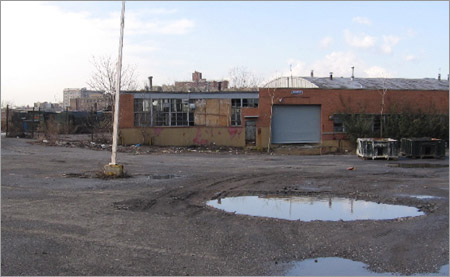Scientists find that urban wastelands have huge, untapped potential to remove carbon dioxide from the atmosphere and have great potential for carbon capture. Imagine the abandoned lots that look like eyesores as untapped resources that contribute significantly to carbon absorption. Ecologist are learning that with strategic planning and care, urban brownfield soils could be transformed into plant gardens with unique carbination capacities to remove carbon dioxide from the atmosphere.
Carbonation involves the combination of calcium, which is abundant in brownfield soils that contain demolition waste such as concrete dust and lime, with atmospheric CO2 to form calcium carbonate (calcite). The inorganic carbon in calcite can form very rapidly in brownfield soils, making them more efficient natural resources for cutting atmospheric CO2 than common, “non-toxic” soils.

The U.S. Environmental Protection Agency (EPA) defines a brownfield as “real property, the expansion, redevelopment, or reuse of which may be complicated by the presence or potential presence of a hazardous substance, pollutant, or contaminant”. The actual presence of contaminants on this “real property” must be determined by a carefully planned investigation known as an environmental site assessment (ESA).
A research team with the British Ecological Research Society surveyed 21 brownfield sites measuring soil carbon levels over an 18-month period. Their results reported at the December 2016 meeting showed that one hectare of urban soil can sequester up to 85 tonnes of atmospheric carbon per year. “Scaling that up, appropriate management of less than 12,000 hectares of urban land to maximize calcite formation could remove 1 million tonnes of CO2 from the atmosphere each year,” explains Professor David Manning of the SUCCESS project.
Let’s make 2017 the year that we band together to transform urban wastelands into beautiful and useful Carbon Capture Gardens.
______
Information in this blog was adapted from:
British Ecological Society (BES). Turning urban wastelands into carbon capture gardens. ScienceDaily. ScienceDaily, 13 December 2016.
Brownfieldaction.org. What is a brownfield?
